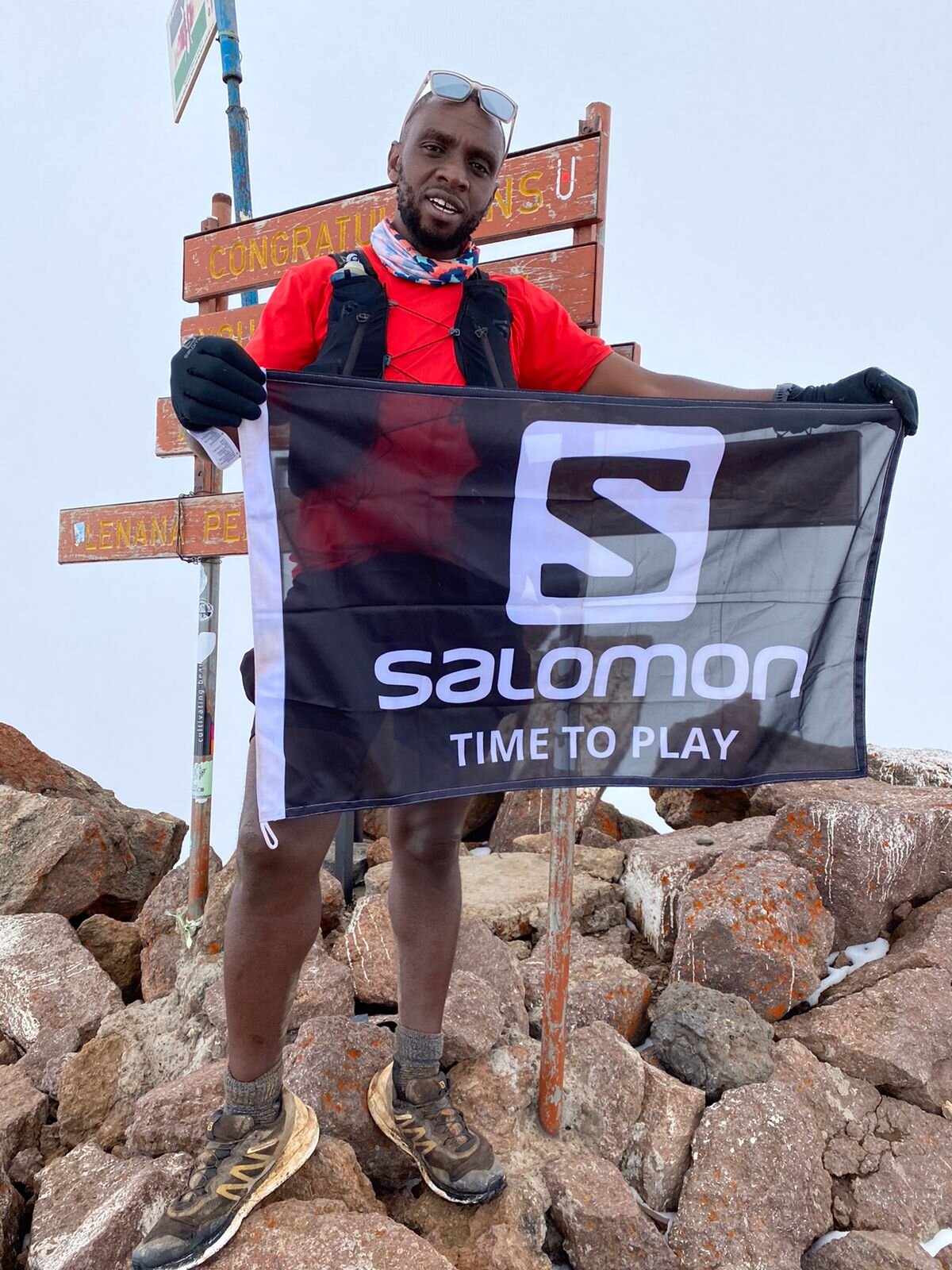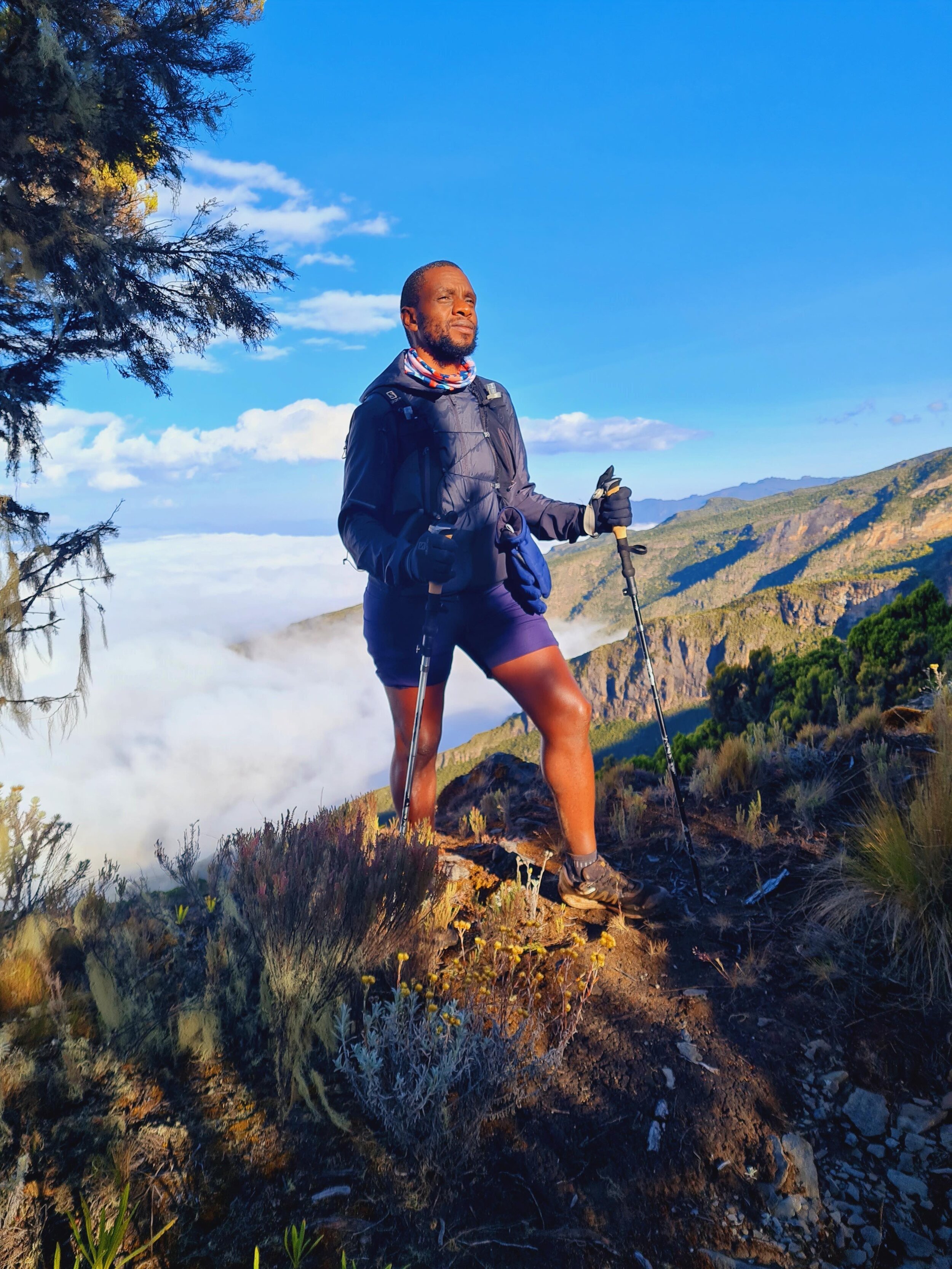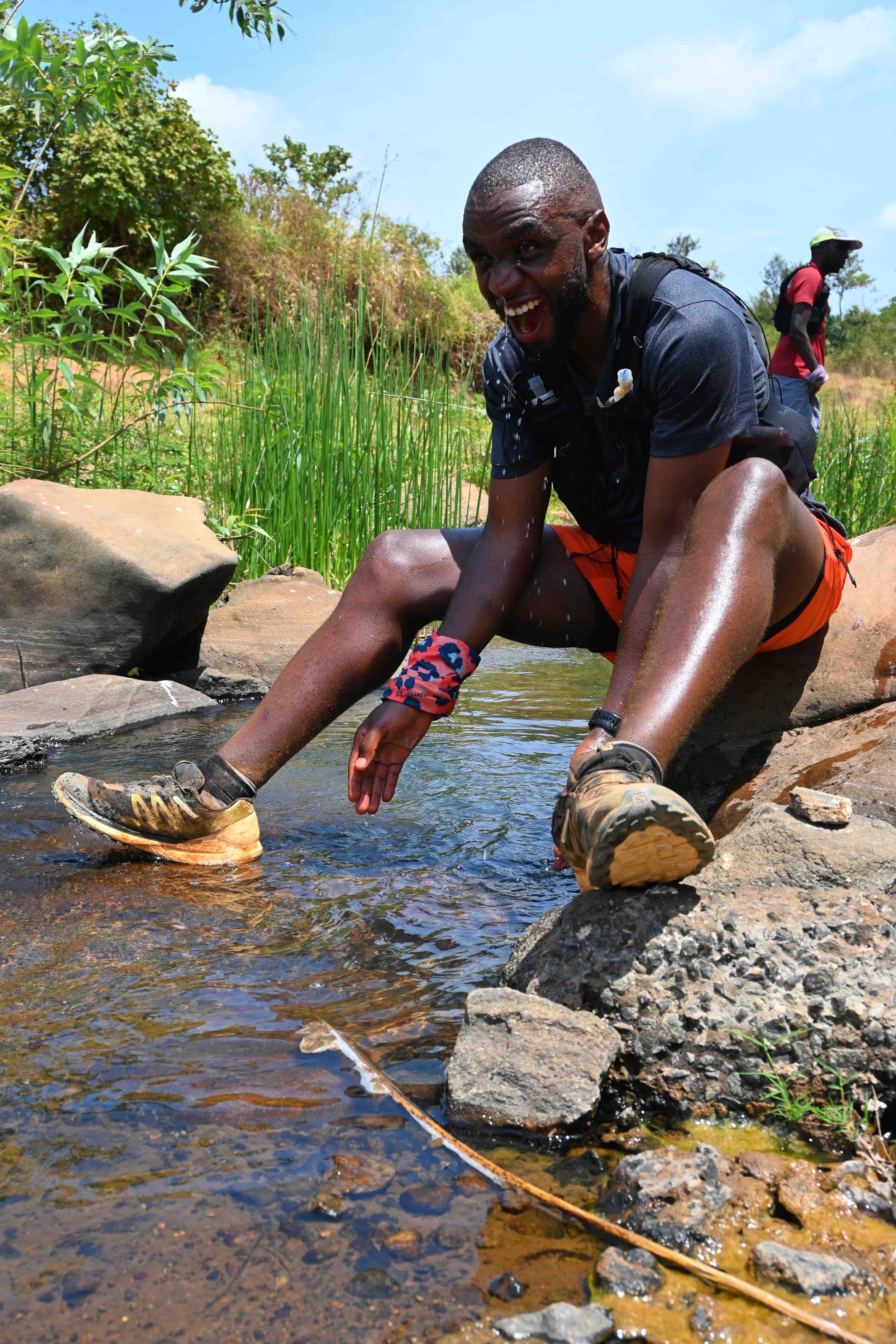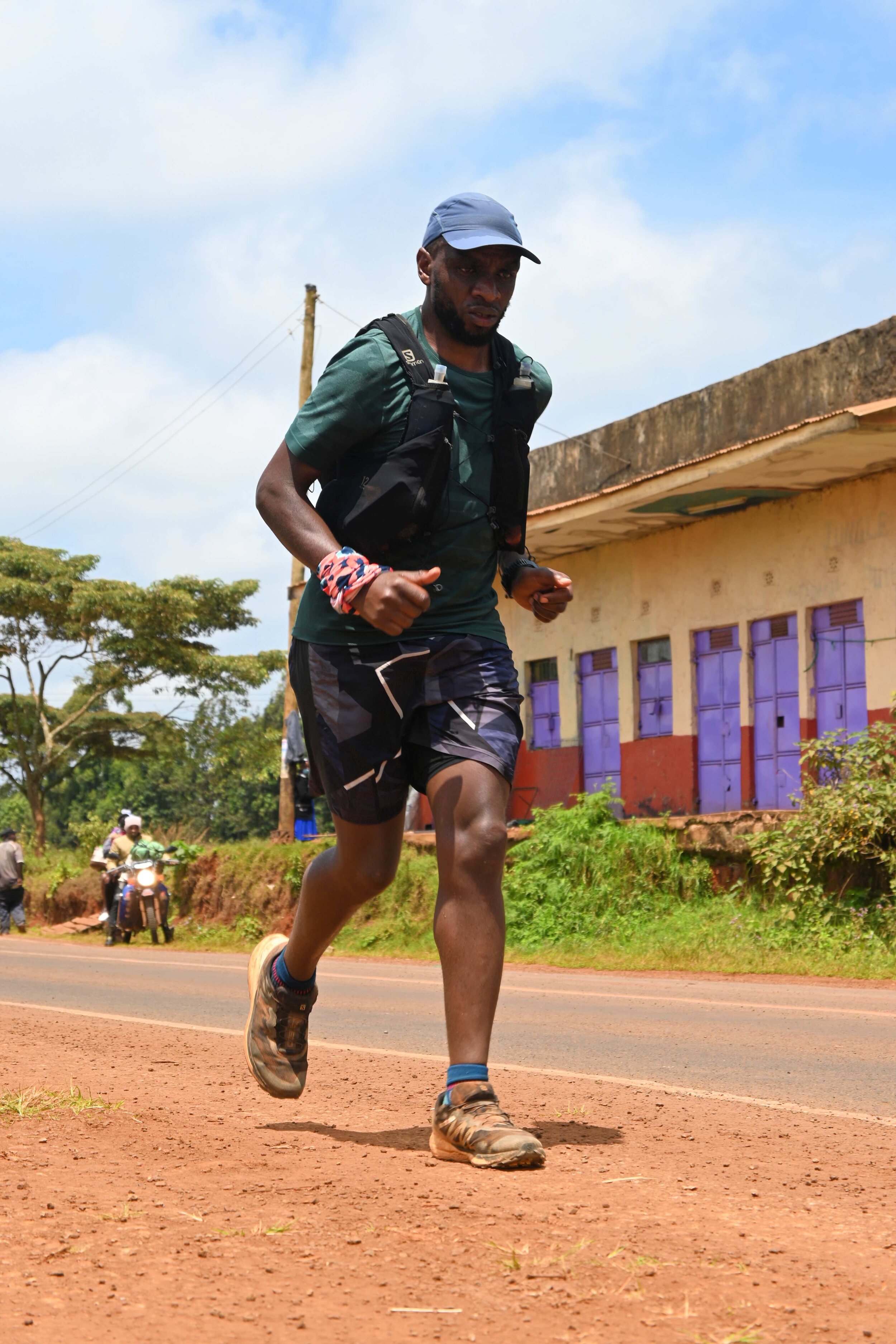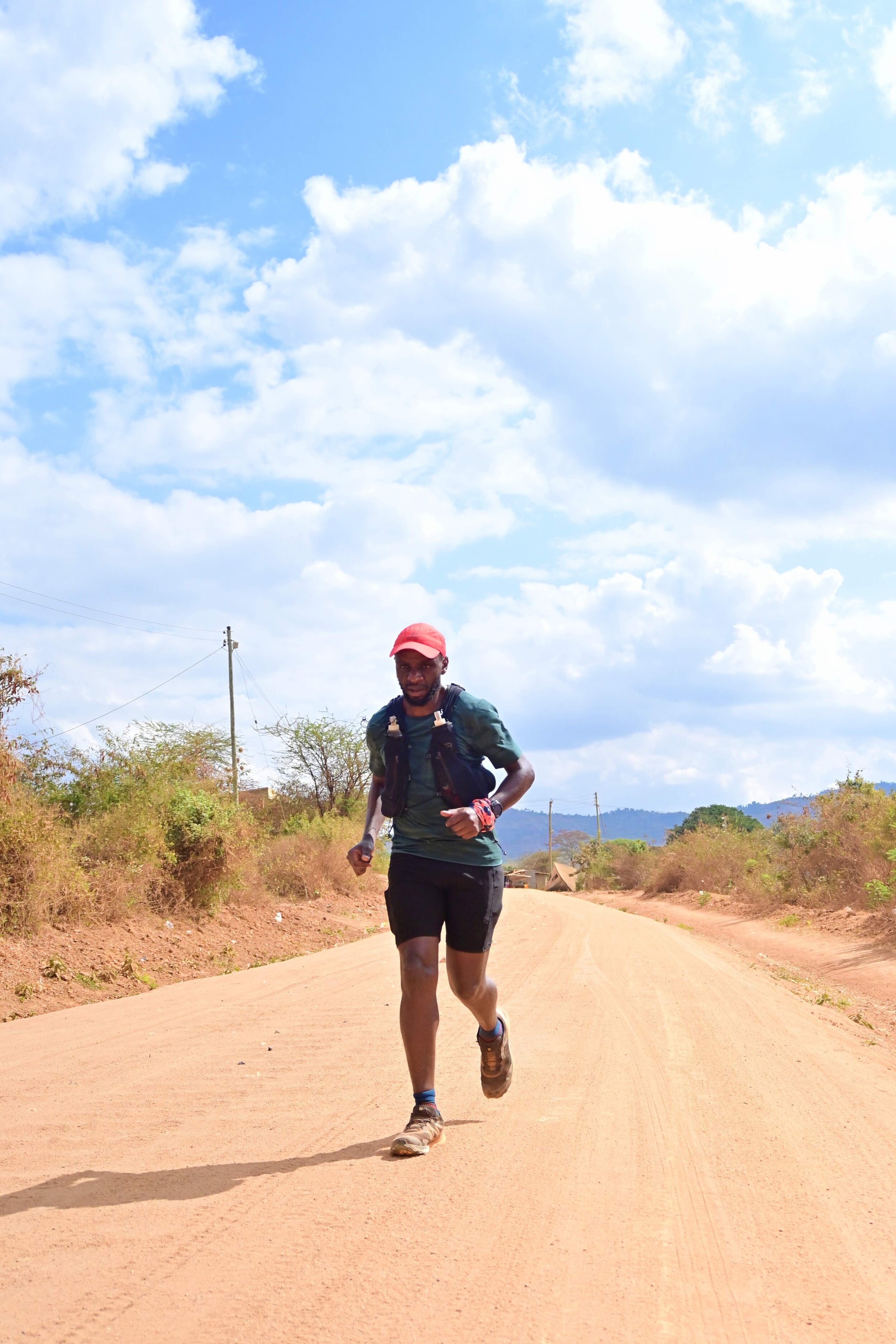The Wilder Interview: Limo Kipkemoi
On the 14th of August, Kenyan ultra runner, Limo Kipkemoi, embarked on his most ambitious challenge: to summit Mount Kilimanjaro, run hundreds of kilometres north and ascend to Point Lenana on Mount Kenya. Over the course of the next eight days, he covered 497.3 km across parched plains and up the rugged slopes of two of Africa’s tallest mountains. We caught up with Limo soon after he completed the challenge, to hear about the highs and the lows, and the motivation behind his adventure | Photography by Salomon Kenya
Wilder: Congratulations for completing the Summit to Summit Mountain Challenge. It’s been a week since you summited Mount Kenya and finished the challenge, how are you feeling now looking back on the adventure?
Limo: I’m still digesting what happened. I didn’t think it was such a big deal, but the more people talk about it, the more I realise that it actually was a big deal! It was 500 km, which was tough. I’d done a six-day run before, so I didn’t know how it felt to do more than that. But it all went well. I’ve speed-climbed Mount Kilimanjaro twice, but after each of those trips I needed four days to rest. So you can imagine how brutal it was to summit Kili and immediately face a run of 75 km, for the next six days.
How did the idea for the challenge first come about, and what attracted you to it?
A while back I spoke to an ultra runner called Silvere, who had imagined the challenge. I remember telling him, ‘Bro, running from Kili to Mount Kenya is just impossible!’. So my original idea was to run from Mount Elgon to Mount Kenya, which I thought was more doable. In the meantime, I summited the three routes up Mount Kenya as part of a 24-hour challenge, and I thought what’s next? After that challenge with the Salomon team, people started doing the one-day speed hike to Point Lenana on Mount Kenya. It seemed to me that everyone was jumbled up in one basket; someone needed to step out and push the envelope to inspire people to push it further. It was a bit of a joke at first, but I thought why not attempt Kili to Mount Kenya? If I had at least five days to do it, I could give it a shot. I thought, whatever happens, at least I’ll have attempted it and someone else can try it too and complete it.
Firstly, I just wanted to see if I could do it, to test my endurance limits. Secondly, it was because the work I do is very taxing – designing and seeing buildings every day, always thinking about them. It gets to the point where I work on two different projects and design the same product. I run out of ideas. For me, I often need that time to just open your mind, to stop thinking about office work, and to get new motivation from nature and from people.
On Instagram in the lead up to the challenge, you put up a post about your training, saying that you’ve never followed a training plan. How did you prepare physically for the challenge, and the altitude up Kili and Mount Kenya?
I don’t really have a plan; I run with my heart. Whatever my heart tells me to do, I do it. But I knew I had to train at high altitude. At weekends I used to go to Ngong Forest Sanctuary, Karura Forest or Ngong Hills. I love to run up the Ngong Hills because it’s not very taxing and it’s long, so it gives you a good balance. Karura is just a fun place to go, and there is shade everywhere. Ngong Forest is quite a tough trail with many turns and roots, so you have to be very cautious. To prepare for the high altitude, I think I went to Mount Kenya three times, one being a particularly tough one. I wanted to run at 4,000 m above sea level, so that meant going to Shipton’s Camp, summiting from there, then down to Mackinder’s Camp, back up to the summit, down to Minto’s Hut and then back up to the summit. But the altitude really beat me up. It punched me a good one. But it hardened me. When I went back again, I just cruised up and down.
In total, over the course of eight days, you covered just under 500 km. What were some of the furthest distances you covered per day?
The longest was just before Emali on day four, when I covered 82 km. Apart from the distance, I was chafing and bruising badly. My thighs were really suffering – I had to use ladies thigh pads, which saved the day. The chafing happened from day two, when I was nearing the Kenyan border. I forgot to carry my petroleum jelly, so I bruised badly, but I kept ignoring it. In the evening when I went to shower, and the water touched it, I thought shit, I’m screwed for the rest of the journey!
What equipment and supplies did you carry with you?
I was unsupported, so from Kili I knew I needed everything that I would use all the way to Mount Kenya. I dumped my mountain gear in a Salomon team car after summiting Kili – a thermal jacket and hiking poles. I’m a minimalist so I just had three pairs of shorts, three t-shirts, three pairs of socks, a penknife, tablets for first aid, some energy gels, refillable water flasks, a power bank to charge my phone and watch, a waterproof jacket and trousers, two headlamps, and some money. That’s all. So the first thing I did when I stopped was to wash the clothes I wore that day. If they didn’t dry by morning, I packed them, and then I least I had a pair. So wash one, wear the other one, and carry another one.
Where did you sleep along the way, and what did you do for food and water?
I don’t do much planning. I knew from the foot of Kili to the border there were shops along the way, and homesteads where I could fetch water. But I forgot to change my Kenyan Shillings to the Tanzanian currency, so I couldn’t buy much. Luckily I met some friends along the way, who gave me some snacks to push me to the border. For water, I wasn’t really worried. I’ve done 50 km before without water. But I knew there would be homesteads along the way, so I could just dash in and get some water.
I’d mainly sleep in roadside hotels, but I didn’t have plans for specific places to stay. Option one was always to sleep in a hotel, and if I didn’t find one, I would look for a church. I thought there would always be a pastor somewhere who could offer me a room to sleep in.
What would you say were some of the most challenging moments of the journey?
I think the pain from chafing was the biggest challenge. I’ve chafed before – when I ran from Nairobi to Nakuru I was bleeding, but I still pushed another 30 km. I knew 30 km was manageable; now imagine you’re bleeding at 105 km, and you have another 400 km or so ahead of you. So that pain was unimaginable. You don’t even want your clothes to touch you. That was the biggest challenge. Also, on day three, sleeping hungry was nasty. I almost called back to Nairobi to arrange for a support vehicle to pick me up and stop this nonsense. I was hungry, tired and in pain, and I was alone.
How did you stay motivated through these low points?
In my mind I thought, you’ve started, people are waiting to see if this challenge is possible. So if I give up before giving it my best, I felt like I was short-changing the whole world. So I thought let me push until I can’t even crawl. Even through the pain, if I can still push my legs in front, I’ll keep going.
And what were the best moments for you?
I think on the first day, having those guides on Kili cheering me on. Seeing friends along the way, too. Getting to the summit of Kili all alone was also quite an amazing moment. When I got to the summit, there was a beautiful sunset. I love sunsets, and it was as though God was telling me ‘This is what was waiting for you’. And then again, summiting Mount Kenya at the end, the weather was good enough that we were just wearing t-shirts. It was like God was rewarding me for all that pain. After summiting, I ran down to Old Moses Camp, where a small group of friends were waiting for me. It was good to know that people were actually cheering me on.
The good thing about these journeys, too, is that you actually interact with locals at their level. In Nairobi, it’s more about who you are. But in rural areas, people just see you as a human being. No one knows that I’m an architect. They just see you suffering through your journey and they ask you what you need. Of course, the biggest question that everyone asks is ‘How much are you being paid for this?’. No one believes that you’re doing it for free. It’s always like ‘No black guy does this shit for free! Someone must be paying you!’.
Ultra running is still a very new sport in East Africa. What advice would you give to anyone who wants to start pushing beyond traditional marathon distances?
I remember doing my first ultra, I used to respect – even fear – these ultra runners. That was three years ago. When I first joined in, we were circumnavigating Lake Naivasha. I didn’t even want to run with them because I thought they were so tough. So I wanted to demystify that, and show people that anyone can run an ultra. My physique is not that of an athlete. I’m 75 kilos, and some people call me the fat runner. So it’s not all about physique – you don’t have to look like Kipchoge, and be obsessed with losing all your weight. It’s more about your mindset, and how far you can go.
My first bit of advice would be to choose your trail. Go to a place that inspires you. If you love nature, go into nature, so you can distract your mind. Secondly, make sure you have enough water and supplies to get you through. Third is the gear – make sure you’re comfortable. If you’re planning any long run, the wrong gear – shoes, shorts, shirts – can really mess your run. And don’t focus on speed. Listen to your body and just move. Focus on getting to the end for the first one, and if it’s comfortable, then you can work on improving your times. So Listen to your body, know what works for you, and with time you’ll get there.
Limo tracked his progress most of the way, which you can view on komoot using the link below. The distances shown on the map aren’t accurate because there were gaps in the tracking.

